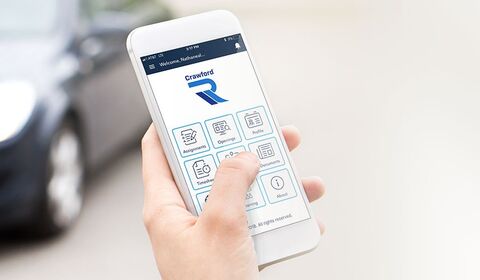As new technologies emerge, the claims process is becoming increasingly automated. And while a growing number of consumers are becoming more comfortable with self-service digital platforms, many policyholders still prefer to speak with human representatives at key points in their claims journeys.
This can create a strategic disconnect as insurers look for ways to improve their claims processes. Focusing purely on speed and data integration without thinking about how new technologies will impact policyholders can create additional challenges further down the line. As companies invest in new technologies, it is important to keep the customer top of mind and ensure that their technology stack supports and enhances those moments of direct connection with policyholders.
“We work in a services industry. Our technology should empower and enable people-first solutions. Companies must be able to match communications with what their customers want.”
– Kenneth Tolson, global president, Crawford Network Solutions
Timely, transparent communications are the foundation of positive customer experiences
A majority of claimants, 76%, still prefer to initiate their claims via phone, but that preference for a human element in their claims experience drops as customers shift to digital platforms to check claim status and repair progress. To keep up with consumer expectations, insurance carriers may offer a variety of communication options throughout the claims cycle.
It's good practice to tailor technology investments to the needs of your policyholders and your specific growth strategies, while still offering an element of personal engagement if the need arises. Removing the human element entirely in an effort to accelerate resolution times can sometimes result in a user experience that feels impersonal, leaving some policyholders feeling like they’re working through the claims process on their own. Thus, a system that provides 24/7 omnichannel support can meet the needs of all customers by providing an “offramp” for policyholders that prefer phone communication over digital platforms.
Process transparency is also a very important part of the customer’s claims journey. Policyholders are likely to experience high stress levels after initiating a claim, and a lack of timely claims and repair updates can compound this stress. On top of that, incoming calls from policyholders seeking status information can be distracting and consume adjusters’ valuable time that could be spent processing claims.
Look for a claims management platform that can provide automated notifications as claims cross key checkpoints to help keep policyholders up-to-date with their claim status. This is one example of how – by making the claims process more transparent and reducing anxiety about their claim – technology can actually increase customers’ peace of mind while also reducing the administrative burden on adjusters.
Combining streamlined claims processing with experienced, empathetic claims management staff is the key to improving the customer experience
While insurance carriers that have good communication practices in place are likely to have an advantage in the marketplace, communication is only a part of the larger picture. Increasing the speed of your claims processing and enhancing the customer experience are equally important. Most consumers identify speed of settlement and process transparency among the most crucial characteristics of a quality claims experience.
Systems that employ automated triaging can help adjusters process claims more efficiently so they can quickly resolve simple claims and give complex claims the time and attention they need.
But predictive systems are only as good as the information gathered during first notice of loss (FNOL). Insurers should invest in user-friendly FNOL products developed and offered by experienced technology partners. Implementing FNOL technology that integrates seamlessly into your claims management systems can help adjusters start off on the right foot with informed, effective first touches that can also enable supportive, empathetic engagement with policyholders when needed.
It is also vital to invest in the human element as well as your technology platform. Training and mentorship for adjusters and other employees is just as important as incorporating the right technology for your business to reach its full growth potential. Employee development not only helps build adjusters’ skillsets and knowledge base, but it also helps nurture empathy for policyholders.
Companies should establish strong training programs to support a new generation of adjusters. Offering learning opportunities directed by experienced adjusters can help your business build a significant competitive advantage in the future.
An efficient claims experience with a human touch is the key to customer satisfaction. Flexible technology workflows that enable policyholders to connect with an empathetic, responsive employee when they want more direct engagement can help build customer loyalty and drive retention.
Learn more about how to future-proof your tech investments by reading our report.



